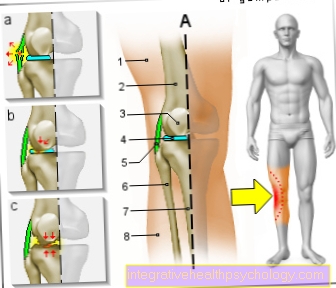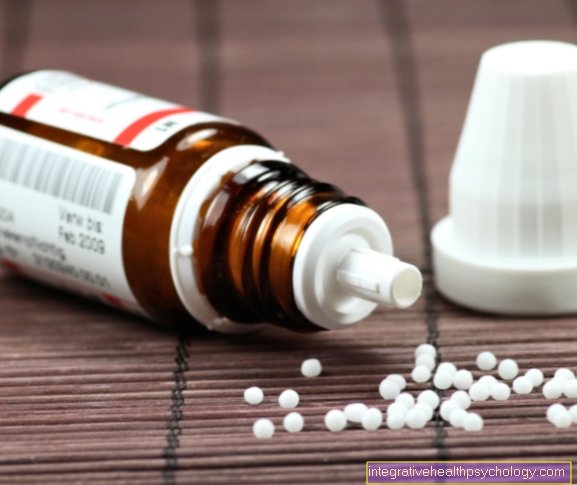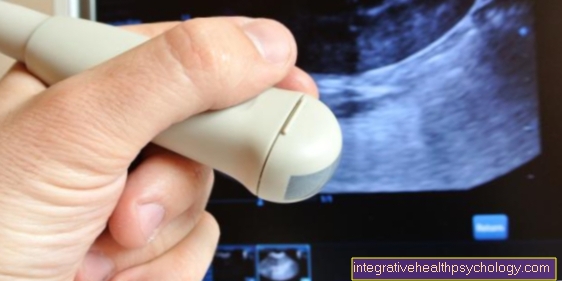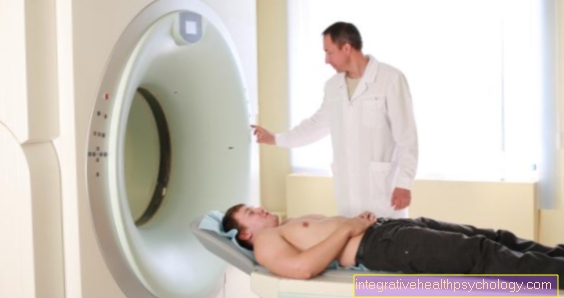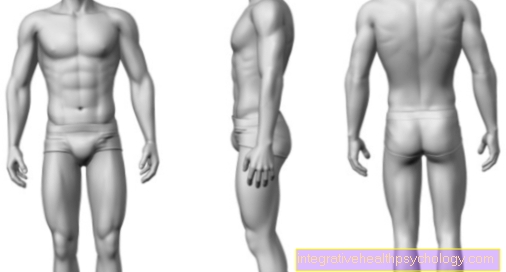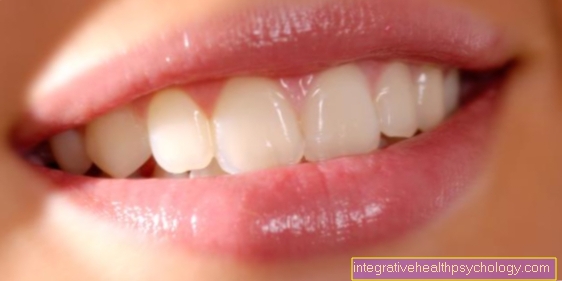The Emla patch
introduction
Emla patches are patches that contain lidocaine and prilocaine. These are local anesthetics. By sticking the Emla plaster on, subsequent interventions, such as blood sampling or venous access, can be carried out painlessly.
This is particularly used in paediatrics to take away the fear of needles in small patients and not to associate a hospital stay with pain. Even small surgical interventions on the surface of the skin can be carried out in this way on both adults and children.

The indication for the Emla patch
The main indication for Emla patches are small operations on the surface of the skin and the insertion of needles. Especially in the induction of anesthesia, it has proven to be useful to only place venous access in children after using an Emla plaster, as this reduces the fear of the children in future operations.
Even minor surgical interventions, such as the removal of pelvic warts, can be performed under an anesthetic with Emla. The Emla patches are used less often in adults and are used particularly in very pain-sensitive and anxious patients.
The Emla patch after a blood sample
For many children, taking blood is part of a horror scenario in the pediatrician's practice and is nevertheless important for many laboratory tests. The Emla patch can prevent pain here.
The children hardly feel the needle sticking in and are less afraid when they visit the pediatrician again. It is also advantageous for the blood collection itself if the children do not feel any pain and do not defend themselves against the procedure. It is often easier for parents to bring their children to the pediatrician if the doctor uses Emla plasters to take blood samples. However, the Emla patches are not used by every pediatrician.
Also read the topic: Blood collection
The active ingredient in Emla patches
The active ingredients in Emla patches are lidocaine and prilocaine. These are local anesthetics. The local anesthesia is triggered by the plaster releasing the active ingredient into the upper layers of the skin near the pain receptors. The active ingredient stabilizes the membranes of the nerve cells by blocking the voltage-dependent sodium channels. There is normally a permanent change in ion concentrations on the membrane. This exchange is necessary so that a nerve impulse, in this case pain, can be passed on via so-called action potentials. Depending on the dosage, lidocaine first switches off pain fibers, then the temperature sensation and finally pressure and touch.
With light dosing, i.e. only a short application of a plaster, the prick of the needle is perceived, but it is not perceived as painful. The active ingredient only works where the patch is attached and therefore has little effect on the rest of the body. Lidocaine and prilocaine are then absorbed by the body and excreted through the kidneys.
Read more about here the Effects of lidocaine.
The side effects of Emla patches
Most of the side effects of Emla patches occur directly at the site of application. Common side effects, i.e. every tenth to one hundredth child is affected, are skin changes, paleness at the place of application and slight edema, such as an insect bite. Occasionally, i.e. with less than one percent, allergic reactions with itching and burning at the application site and increased blood flow with a feeling of warmth in the area of the patch occur.
In rare cases, a severe allergic reaction develops with life-threatening breathing difficulties and circulatory shock. This is to be expected in less than one in a thousand children. The hemoglobinemia change in the blood count is just as rare. This is particularly noticeable in newborns and occurs more frequently in premature babies, which is why Emla patches should not be used in premature babies before 37 weeks of gestation.
Long-term use of Emla patches, such as in children with the skin disease atopic dermatitis, can lead to bleeding into the subcutaneous tissue.
If the side effects are more severe, Emla patches should be removed immediately and should not be used for later interventions. Treatment with other drugs containing lidocaine should also be avoided.
For more information, also read: Side effects of local anesthesia.
The interaction of the Emla patch with other medicines
Since Emla patches can rarely cause methaemoglobinemia, they should not be combined with other medications that can also cause such blood changes. These include the drugs sulfonamides, nitrofurantoin, phenytoin and phenobarbital. Cimetidine and beta blockers can slow down the breakdown of lidocaine and thus lead to high amounts of active ingredient in the tissue when used repeatedly. This can lead to symptoms of poisoning. However, the one-time use of Emla patches is completely uncritical here.
When shouldn't the patch be used?
The most important contraindication to the use of Emla patches is hypersensitivity or allergy to the components lidocaine, prilocaine and similar local anesthetics. Emla plasters should also not be placed on bleeding, open wounds, as the available studies are not sufficient.
If you have pre-existing methaemoglobinaemia or a glucose-6-phosphate dehydrogenase deficiency, Emla patches should be used carefully. However, it is not an exclusion criterion. In the case of atopic dermatitis, the exposure time should be shortened.
The dosage of the Emla patch
One emla patch contains one gram of emla emulsion. This contains 25mg lidocaine and 25mg prilocaine. The maximum number of Emla patches per day varies depending on age and previous illnesses.
In adults and adolescents older than 12 years, more than 20 patches can be used without any problems. The dosage is slightly lower in children and significantly reduced in infants. To reduce the dose, the patches must not be cut or otherwise crushed.
How much does the Emla patch cost?
Emla patches are only available from a pharmacy but are over-the-counter. Two plasters cost a little more than five euros. A pack of 20 patches can be purchased for around 65 euros. The patches are usually in stock in hospitals and doctors' offices. Depending on the medical necessity, Emla plasters can also be issued as a prescription in paediatrics.
Use in children
Emla plasters are particularly popular in paediatrics. The patches can be stuck on the skin before minor procedures, such as a blood test or a vaccination. That way, the kids won't perceive the needle stick as being painful. In particular, anxious children can be relieved of their fear of subsequent visits to the doctor. Newborns can also have Emla patches attached to prevent pain and prevent fear of doctors later on.
The frequency and nature of the possible side effects are largely the same in children and adults. Only the risk of methaemoglobinemia is increased in infants up to their first birthday. The maximum daily dose is reduced depending on the age. Children between the ages of six and eleven can receive up to 20 Emla patches a day. Children between the ages of 1 and 5 should not have more than 10 patches on. Infants from the third month of age can have two patches and newborns up to the third month can have one patch. The exposure time is also reduced in newborns and infants.
Premature babies before the 37th week of pregnancy should not be given Emla patches, as the risk of methaemoglobinaemia is greater than in children born mature.
The exposure time
The Emla plasters should be applied at least one hour before the planned procedure. After five hours the numbing effect wears off. In babies and newborns, the patches should be removed after one hour.
With some skin diseases, the required exposure time also changes. Children and adolescents with atopic dermatitis should not be exposed for more than 30 minutes.
The alternatives to the Emla plaster
The active substances in the Emla patch can also be administered in other ways. The combination of lidocaine and prilocaine is also available as an ointment under the name Anesderm®. Gels containing lidocaine are also available.
Xylocaine spray is particularly suitable in the area of mucous membranes, such as in the mouth. The Anesthesulf® lotion is suitable for large-area application. The dosage, especially in children, should be read carefully in the package insert and the family doctor or pharmacist should be asked if you have any questions.
Is the Emla patch available without a prescription?
Emla patches are only available from a pharmacy, but do not require a prescription. The patches can therefore be bought in any pharmacy without a prescription.
For children, a cash prescription can sometimes be issued so that the costs do not have to be borne by yourself.




